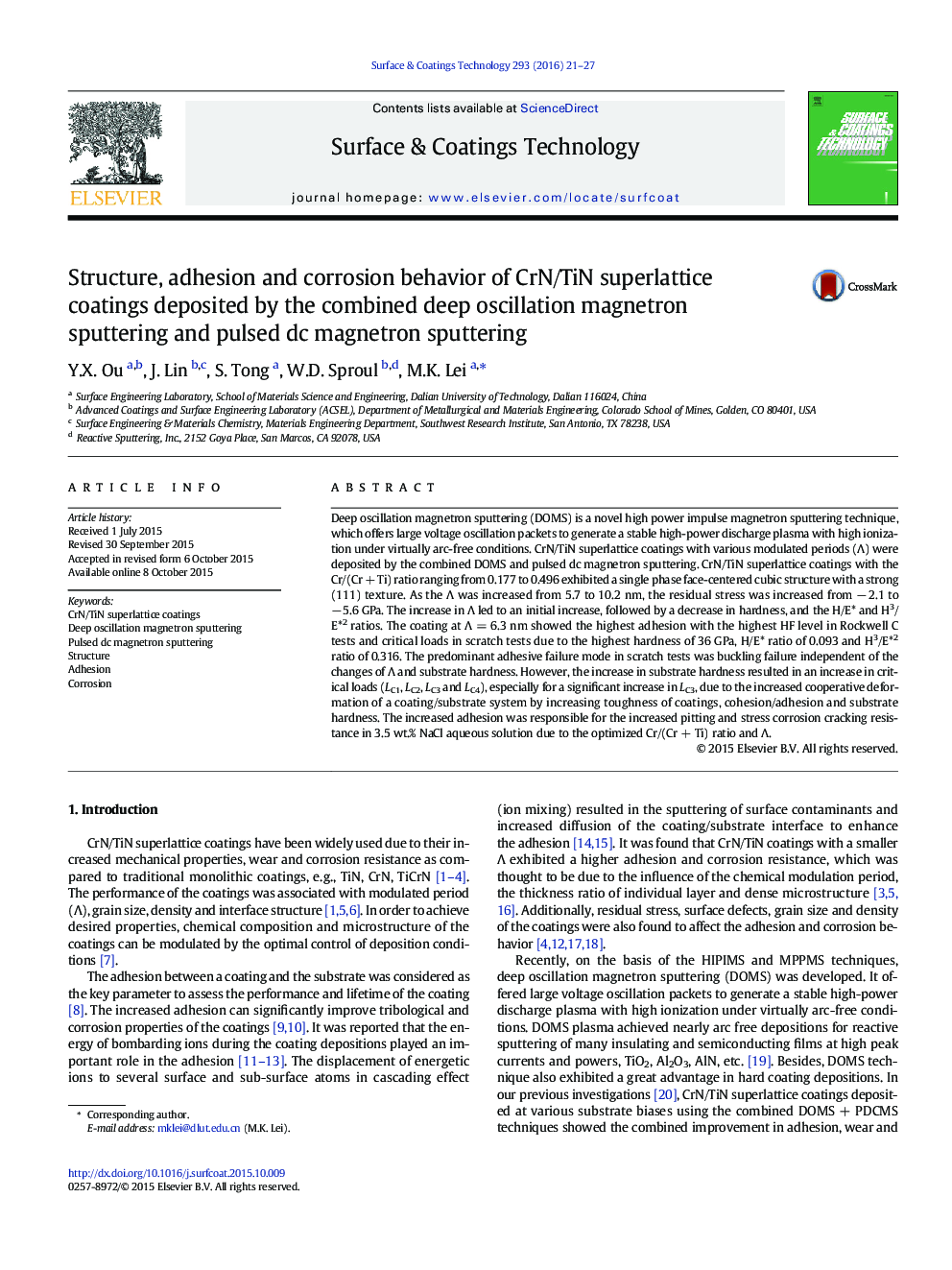| Article ID | Journal | Published Year | Pages | File Type |
|---|---|---|---|---|
| 1656482 | Surface and Coatings Technology | 2016 | 7 Pages |
•CrN/TiN superlattice coatings were deposited by the combined DOMS + PDCMS.•CrN/TiN coatings with a Λ of 5.7–10.2 nm had a single phase fcc structure.•Dense coating/substrate interface and well-defined interfaces improved adhesion.•The coatings had buckling failure mode independent of Λ and substrate hardness.•Dense microstructure and high adhesion can eliminate pitting and stress corrosion.
Deep oscillation magnetron sputtering (DOMS) is a novel high power impulse magnetron sputtering technique, which offers large voltage oscillation packets to generate a stable high-power discharge plasma with high ionization under virtually arc-free conditions. CrN/TiN superlattice coatings with various modulated periods (Λ) were deposited by the combined DOMS and pulsed dc magnetron sputtering. CrN/TiN superlattice coatings with the Cr/(Cr + Ti) ratio ranging from 0.177 to 0.496 exhibited a single phase face-centered cubic structure with a strong (111) texture. As the Λ was increased from 5.7 to 10.2 nm, the residual stress was increased from − 2.1 to − 5.6 GPa. The increase in Λ led to an initial increase, followed by a decrease in hardness, and the H/E* and H3/E*2 ratios. The coating at Λ = 6.3 nm showed the highest adhesion with the highest HF level in Rockwell C tests and critical loads in scratch tests due to the highest hardness of 36 GPa, H/E* ratio of 0.093 and H3/E*2 ratio of 0.316. The predominant adhesive failure mode in scratch tests was buckling failure independent of the changes of Λ and substrate hardness. However, the increase in substrate hardness resulted in an increase in critical loads (LC1, LC2, LC3 and LC4), especially for a significant increase in LC3, due to the increased cooperative deformation of a coating/substrate system by increasing toughness of coatings, cohesion/adhesion and substrate hardness. The increased adhesion was responsible for the increased pitting and stress corrosion cracking resistance in 3.5 wt.% NaCl aqueous solution due to the optimized Cr/(Cr + Ti) ratio and Λ.
